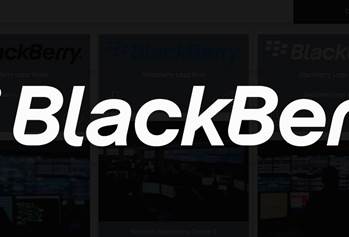Ericsson is replacing its previous tiered resale programs for its Enterprise Wireless Solutions division with a Solutions Partner program, where all partners start with the same base requirements and benefits and, through investment in enablement programs, can unlock incremental benefits.
Matt Cook, the US-based head of sales, go-to-market and support for Ericsson Enterprise Wireless Solutions - who was in Australia recently to attend the company’s Asia-Pacific Partner Exchange, with over 70 partners in attendance - said he noticed upon joining the company in September how “complicated” the partner program was.
This included everything from the way certifications were managed and the number of levels in the program to the different products Ericsson has and the partners aligned to IT technologies versus OT technologies.
“It had this need of not only having a complicated partner program, but also multiple programs - it wasn't just one partner program,” he said.
“The simpler it is, the more streamlined it is and the better the experience is, so what we strived to do is take all these disparate programs and create one program - to do that you bring it to the lowest common denominator.
“If I try to do the nuances of every group, you continue to have a complicated program, so we followed suit with what you see with a lot of technology companies, which is removing tiers - getting to one program and one tier.”
Cook also noticed that while the standard discount for partners - which comprises of managed service providers, resellers, system integrators and more - participating in the program was “really high”, sitting at around 30 per cent, the deal registration discount was only 5 per cent.
Ericsson has now lowered the standard discount for participating partners, but increased the deal registration discount to 15 per cent.
“The ultimate goal is I want our partners making right around 20 per cent margin with us,” Cook told us.
Ericsson, through its Cradlepoint business acquired in 2020, also has its own Mountaineering sales and technical certification program, which is being brought into the revamped partner program.
In order to achieve the 15 per cent discount on deal registrations, partners must have that certified sales and technical competence.
“As we roll this out, everybody's like ‘How long will it take us to meet the new requirements?’, but a lot of our top tier partners already meet the requirements,” he said.
“How we're structuring this is there was a 5 per cent deal registration discount - that's the base benefit and you still get 5 per cent - but once you get the certified people on board, then you get access to the 15 per cent.”
The enterprise side of Ericsson’s business has around a 95/5 split in terms of business going through partners or direct, but Cook said that he doesn’t want to be partner- or direct-led, but instead “partner-centric”.
“To me, I'm not focusing so much on where leads come from, just that we're creating more together,” he said.
“Sometimes when you say ‘is the partner creating this opportunity?’, you put salespeople on defence, so I'm trying to just neutralise that and say ‘are we growing it together?’.
“From a percentage of business perspective, I think a 95/5 split is about right. I'm not looking to grow the direct business by any means. We are selling through partners, and it's going to stay that way.”
DAS alternatives and LEO satellite integration in-demand
Globally, Cook said partners are asking about an alternative to distributed antenna systems– a way to ‘enhance network performance and coverage without requiring additional power sources’, according to Ericsson - as people are noticing the “economics of it didn't really pan out”.
“[In the US] you see companies like Corning getting out of it and CommScope selling off their business to Amphenol, so they're looking for a different EP5G-type private cellular network solution that is better economics when working with the carriers and with the partners,” he said.
“Some of that is technical, some of it's financial, and it's not always about ‘is it the low price?’, but sometimes you could change your architecture and require less overhead from a cabling perspective that makes it more economical.
“That's one thing that's been asked for loud and clear, and we do have a solution for that, but the challenge is that solution requires a certain level of technical competence, so now it's an enablement challenge - how do we share that knowledge so that people are really good at doing those things?”
More locally, he said partners are looking for LEO satellite system integration.
“5G works great when you're close to a city centre, but what happens when you actually go out of that city centre and how do we enable police and first responders and medical personnel to always maintain connectivity, even though you might be out of reach of a tower?” he said.
“We already had to solve this when it comes to marine [applications] - think about ships coming in from shore, and then they get 10 plus miles away, they've got to switch over to something else and then as they get close to shore, what is that failover, fallback option?
“We were applying these rules there, so now it's about how do you apply it into a mobility perspective in a way that actually still looks nice - you could have antennas flying everywhere, and before you know it, it's a crazy looking vehicle, but aesthetics matter to a certain point.”

.jpg&w=480&c=0&s=1)





-1.jpg&w=100&c=1&s=0)



















